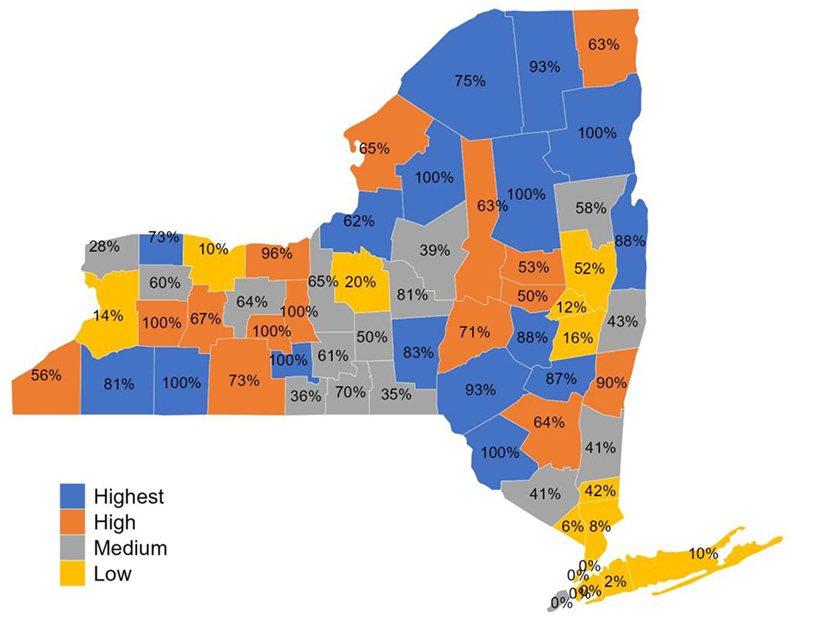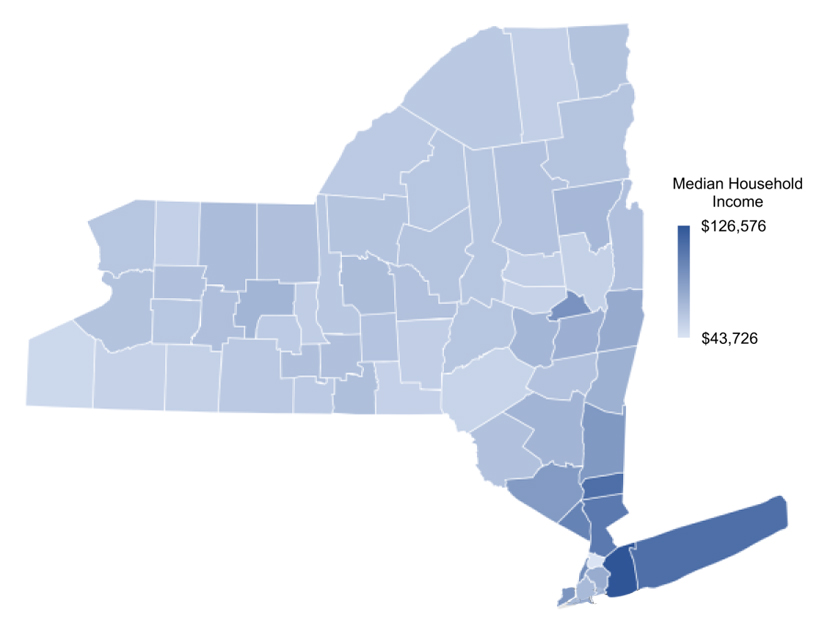
New York officials have released the framework for a state cap-and-invest program and recommendations for allocating funds from the associated Consumer Climate Action Account (CCAA) to state residents.
The preproposal outline and a Climate Affordability Study released by the New York State Research and Development Authority (NYSERDA) and the Department of Environmental Conservation (DEC) on Dec. 20 suggest a broad and layered “waterfall” approach to distributing CCAA funds. The method would primarily use a refundable tax credit that then cascades down to those unable to access the funds through more targeted methods, such as through existing welfare programs.
The state has been evaluating a cap-and-invest proposal for more than a year. The program would auction emission allowances to obligated sources, such as large-scale emissions producers, and nonobligated entities, such as agricultural or forestry industries. Proceeds from those auctions would feed the CCAA, which in turn would fund climate projects, particularly in disadvantaged communities (DACs). (See NYISO to Comment on State’s Cap-and-invest Plan.)
NYSERDA and DEC reviewed 29 policy precedents and assessed the eligibility of 14 benefit programs, concluding that an ideal cap-and-invest program would minimize the exclusion of eligible individuals due to administrative or systemic barriers.
The outline details the key regulatory and compliance aspects of the cap-and-invest program, including the mandatory greenhouse gas reporting program rule, cap-and-invest rule and auction rule. The document currently contains placeholder values for aspects such as price levels for emission allowance price triggers or ceilings, but the actual values will be released in January.
The study focuses on the effective and equitable distribution of money collected in the CCAA from the cap-and-invest program.
The agencies recommend that CCAA fund distribution prioritize low-income individuals, those facing high energy costs and non-tax filing households, proposing a progressive, means-tested benefits program to expand accessibility. The report also recommends exploring direct payments, utility bill assistance or transit vouchers to reach non-tax filing individuals or households.
‘Cornerstone’
New York currently lacks any programs with a waterfall approach, but the study draws comparisons to federal programs like Supplemental Security Income for disabled individuals or those over 65 and government health insurance programs that use personal income to determine eligibility for state-sponsored health tax credits.
The study says, “a waterfall approach would likewise utilize multiple programs to reach a larger set of households and would likewise restrict the ability of households to receive cumulative benefits from multiple programs.”
The proposed waterfall approach aims to prioritize and channel funds to DACs, ensuring support for climate-related expenses and energy costs for the most impacted populations.
However, the agencies acknowledge that no single distribution approach or regulation can achieve all the goals of the cap-and-invest program. They therefore recommend assessing the feasibility of the waterfall approach while also considering other methods to ensure all eligible New Yorkers benefit from the CCAA funds.
NYSERDA and DEC will continue accepting stakeholder comments on their cap-and-invest proposals. The agencies plan to issue a draft regulatory package and start the formal regulatory process after hosting three public meetings in January.
Anne Reynolds, executive director of the Alliance for Clean Energy New York (ACE), said in a statement that “the cap-and-invest policy is a cornerstone of New York’s Climate Scoping Plan — not just because it would create the cap on carbon pollution that declines over time, but because it would generate funds to help pay for implementation of the rest of the plan.”
She added that the DEC should “include the electricity sector, as ACE argued in comments submitted this past August.”
Kate Courtin, senior manager at the Environmental Defense Fund, said in a statement that “an ambitious program with a high-integrity cap on emissions will play a critical role in getting New York on track to meet its climate targets and delivering a safer, healthier future for New Yorkers.”

